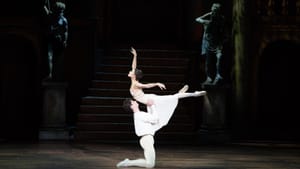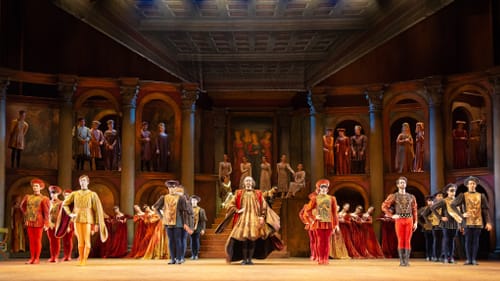Stay in the Loop
BSR publishes on a weekly schedule, with an email newsletter every Wednesday and Thursday morning. There’s no paywall, and subscribing is always free.
Power corrupts
Pennsylvania Ballet presents Sir Kenneth Macmillan’s 'Romeo and Juliet'

Before the curtain rose on the Pennsylvania Ballet’s opening night production of Romeo and Juliet, artistic director Angel Corella took a moment to recognize some important anniversaries. The company was celebrating its 55th season, and music conductor Beatrice Jona Affron was celebrating her 25th year with the company. Corella marked his fifth year as artistic director.
Corella has said that he wants his dancers to excel technically in the studio so they can dance with abandon onstage, fully embodying their roles. Sir Kenneth MacMillan’s masterpiece perfectly showcases this philosophy as evidenced in the company's dazzling, moving show.
From play to ballet
Prokofiev’s score for Romeo and Juliet is almost visual in its representation of the action and emotion of each scene. Created during the period of socialist realism in post-revolutionary Russia, those emotions are personal (the love story) and political (the oppressive power of the nobility), with Verona standing in for revolutionary Russia.
MacMillan’s working-class background informed the visceral realism of his 1965 choreography. While embracing technique, he was dismissive of the more stylized dancing of classical story ballets and required his dancers to execute his intricate choreography while expressing the story’s powerful emotions.
The opulent Birmingham Royal Ballet production, recreated here with scenery and costume design by Paul Andrews, opens on a market scene where street sweepers, hucksters, and harlots mix with the town’s wealthy young men. A deliciously chaotic sword battle breaks out between the Capulets (in red, with black leather cuirasses) and Montagues (in pale blue, gold, and green doublets).
Above the fray, the powers of the town look down from arched balconies with their own gestural commentary. The Prince appears and orders that hostility between the two families must cease, but their dead, heaped center stage, set the scene for the tragedy to come.
Star-crossed lovers
We meet Juliet (Lillian DiPiazza) in her bedroom, playing with a doll and teasing her nurse. The music is lyrical, almost giddy as she clings to a childhood now coming to an end. Her parents introduce her to Paris, the man they have chosen for her husband. Her dance says she is curious but uninterested. Her nurse points out that she has breasts now; time to grow up. An engagement party follows.

Romeo Montague (Sterling Baca) is not invited. He clowns with his friends, Mercutio (Albert Gordon) and Benvolio (Jack Sprance), taunting the guests who arrive in rich red, gold, and black velvet — a sumptuous display of wealth and power.
Prokofiev comments with some of the most ominous music in ballet. The dance is measured, heavy to suit the music, as if the dancers are digging into the stage with each step while, above, watchers add to the moment’s oppressive weight.
When Juliet appears, in white and silver, we can breathe again. But in her rejection of Paris and in the sudden, electric moment of stillness when she sees Romeo, we know they are doomed.
MacMillan uses stillness to good effect, but the scene of Juliet alone on her balcony carries on slightly too long. Once Romeo appears, the dancing is spectacular. They move from shyly starstruck to exuberantly in love, the leaping of the heart expressed in lifts, often with Baca on his knees, raising her in adoration.
Di Piazza only seems to touch the ground so she can melt against her Romeo. They were so hot they sizzled.
Gordon’s Mercutio is wonderful, with quick, sharp movement as he turns even his death into another jest, and the swordfight between Romeo and a suitably evil Tybalt (Ian Hussey) works well. In Tybalt’s mother’s grief, we see the cost of the feud: both families lose their next generation.
Baca’s Act II solo seemed a bit tentative, but he was in fine form in Act III. In the crypt, after Juliet’s death, Romeo tries to replicate the deliriously passionate dancing of the bedroom scene with his lifeless love. It was wrenching.
The ballet ends without the play’s moralizing reminder that all are punished. I suspect neither Prokofiev nor MacMillan believed the powerful ever learn their lesson.
What, When, Where
Romeo and Juliet. Choreography by Sir Kenneth MacMillan, music by Sergei Prokofiev. Pennsylvania Ballet. Through October 21, 2018, at the Academy of Music, 240 S. Broad Street, Philadelphia. (215) 893-1999 or paballet.org.
Sign up for our newsletter
All of the week's new articles, all in one place. Sign up for the free weekly BSR newsletters, and don't miss a conversation.

 Camille Bacon-Smith
Camille Bacon-Smith